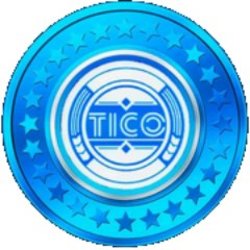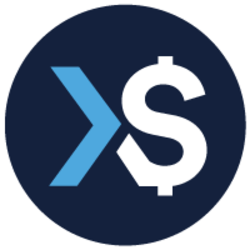Over the past year, there’s been a debate in the blockchain world about the best consensus mechanism. This debate was largely ignited by Ethereum’s decision to completely switch from a proof-of-sork (PoW) to proof-of-stake (PoS) consensus mechanism. Interestingly, one outcome of this debate is that a lot of people now assume PoW and PoS are the only consensus mechanisms that exist in blockchain technology.
But they aren’t. There’s a third consensus mechanism, and that mechanism is part of what sustains the Solana blockchain.
While proof of history (PoH) is only a part of Solana’s consensus architecture, it’s an important element that allows the chain to run faster than most blockchains. We’ll be exploring what Solana is, how it works, and how PoH allows it to confirm transactions faster than any other chain.
Solana là gì?


Solana là một nền tảng blockchain công cộng có chức năng hợp đồng thông minh. SOL là đồng tiền bản địa của chuỗi. Ý tưởng cho Solana lần đầu tiên được Anatoly Yakovenko đề xuất vào cuối năm 2017. Tuy nhiên, phải mất một thời gian trước khi Solana trở thành một chuỗi thực tế.
Đầu năm 2018, Yakovenko đã thực hiện các bước cụ thể để tạo ra blockchain Solana. Yakovenko đã làm việc trên việc tạo ra chuỗi khối với Greg Fitzgerald, một đồng nghiệp của ông tại Qualcomm Incorporated. Chính Fitzgerald là người đã khuyến khích Yakovenko xây dựng chuỗi trong ngôn ngữ lập trình Rust. Fitzgerald cũng là người đầu tiên chứng minh rằng Solana là siêu nhanh, và trên thực tế có thể xử lý hơn 10.000 giao dịch trong khoảng nửa giây.
Ban đầu, nhóm Solana muốn gọi blockchain Loom bởi vì họ đã lên kế hoạch dệt các giao dịch trên thế giới trên một blockchain có thể mở rộng duy nhất. Tuy nhiên, trong khi họ vẫn đang xây dựng chuỗi, Loom Network, một dự án dựa trên Ethereum, xuất hiện và trở nên phổ biến. Kết quả là đội Solana quyết định đi với một cái tên khác.
Cuối cùng họ định cư trên Solana, đó là một tham chiếu đến một thị trấn bãi biển nhỏ ở San Diego được gọi là bãi biển Solana. Yakovenko và Fitzgerald đã lướt sóng tại bãi biển trong ba năm trong khi họ làm việc cùng nhau, vì vậy nó giữ giá trị tình cảm cho họ. Một thời gian ngắn sau đó, tổ chức Solana GitHub được chính thức thành lập. Cùng năm đó, một testnet công khai được xuất bản. Testnet chạy cho đến khi tổ chức Solana GitHub cuối cùng đã đủ thoải mái để xuất bản chuỗi thực tế.
Khối đầu tiên của chuỗi được đúc vào đầu năm 2020, có nghĩa là Solana ra đời chỉ vài tháng trước khi thị trường bò đực năm 2020. Giống như Ethereum, Solana được điều hành bởi một nền tảng. Nền tảng được gọi là Solana foundation, và nó có trụ sở tại Geneva. Công việc xây dựng blockchain, mặt khác, được thực hiện bởi Solana Labs, một công ty có trụ sở tại San Francisco.
What Is Proof of History?
Proof of history (PoH) is a consensus mechanism that uses the passage of time to reach an agreement on decentralized networks. PoH networks use historical events to calculate the passage of time, which makes it easier for the system to validate when transactions took place, and in what order they took place. This ease of consensus results in faster transaction time, and a more scalable network.
Before Anatoly Yakovenko got the idea of building Solana, he’d always wondered about the limitations of blockchains. He reasoned that they simply weren’t fast enough, as many of them couldn’t even complete a hundred transactions in one second.
If blockchains were going to become a global network, they needed to have the scalability of global networks. Visa is one of the largest payment processors in the world, and it processes thousands of transactions every second. That was the sort of efficiency that blockchains were up against, and if they couldn’t beat that or perform close to it, they would fail.
Yakovenko đã làm việc với việc xây dựng các hệ thống phân tán tại Qualcomm, Mesosphere, và Dropbox, vì vậy ông đã có rất nhiều kinh nghiệm trong việc xây dựng các mạng đồng bộ hóa. Ông cũng biết được vai trò mà việc áp dụng đúng thời gian đóng trong việc làm cho các mạng lưới này siêu nhanh. Vì vậy, ông quyết định xem liệu ông có thể sử dụng thời gian để làm cho blockchain nhanh hơn quá.
Đó là những gì đã sinh ra PoH.
Những câu đố thời gian
Thời gian có vẻ giống như một phép đo bình thường, nhưng thực sự thì không. Ngay cả các nhà khoa học vẫn chưa hiểu được thời gian là tương đối hay tuyệt đối. Các lý thuyết tương đối rộng cho rằng thời gian là tương đối, và những lý thuyết của cơ học lượng tử cho rằng nó là tuyệt đối.
When you’re building a decentralized system and plan to reach a consensus between hundreds of nodes at the same time, you need to figure out a way to let them coordinate time. Programmable blockchains solve this problem by relying on an outside program that distributes timestamps, which are then used to validate transactions in their proper order.
But this defeats the purpose of a decentralized system in the first place since the timestamps are assigned by a centralized source. Asides from that, the entire process ends up being a “code bureaucracy” that slows the entire program down.
Yakovenko đã tìm ra cách khắc phục vấn đề này bằng cách cho phép các dấu thời gian này, được chỉ định bởi các chương trình bên ngoài, được xây dựng trên chuỗi. Câu hỏi tiếp theo người ta có thể hỏi là làm thế nào điều này làm cho hệ thống nhanh hơn.
Nếu một nút cụ thể biết thời gian chính xác một giao dịch xảy ra, giao dịch có thể được xác nhận nhanh hơn rất nhiều. Một sự tương tự thú vị mà Solana sử dụng để mô tả tình hình là blockchain tàu hỏa.
The Train Blockchain
Hãy tưởng tượng bạn có một lá thư quan trọng để gửi trên một chuyến tàu rời New York và đến Chicago vào buổi tối. Chuyến tàu này dừng ở Pittsburgh, Philadelphia, và Cleveland trên đường đi. Vì lá thư cực kỳ quan trọng, bạn muốn xác minh rằng đó là chuyến tàu phù hợp để dừng lại với lá thư ở mỗi điểm dừng trên đường đến Chicago.
Other chains solve this “verification” problem by calling and coordinating with one another to verify the train. An attendant in Pittsburgh would call New York to confirm if the train has left, and then call Philadelphia to confirm if it’s expecting a train. The one in Philadelphia would then call Pittsburgh and New York to confirm if the train has left, and then call Cleveland.
However, Solana cuts this bureaucracy by including the time of every stop on the letter itself. While it doesn’t input the exact time, it inputs the name of the city where the train stopped at. Hence, the train station attendant at Cleveland only needs to look at the letter itself to know where the train has stopped, and in what order that stop was made. That makes the train get to its destination faster since attendants don’t have to coordinate with other stations to verify the train. The verification needed is already on the transaction itself.
What this means is that on the Solana blockchain, an individual node can do the work of validating the entire chain. They can do this because the information, or code, needed for the validation is already on the transaction being made. That’s what Proof-of-History (PoH) is.
But that’s not the only reason Solana can go through thousands of transactions in one second. Another reason is that since only one node can validate the entire chain, validations can be done in parallel as well. In practice, this means thousands of transactions can be validated at the same time, and the size of the chain only makes the process faster, not slower. This isn’t the case for other programmable blockchains.
Solana’s Dual Systems
However, the PoH mechanism only solves the time and speed problem of consensus. It doesn’t solve the problem of choosing a validator and doesn’t punish mischievous validators.
Solana utilizes a Proof-of-Stake (PoS) model for those functions. This means that Solana runs a hybrid consensus mechanism that makes use of Proof-of-History (PoH) and Proof-of-Stake (PoS) to validate transactions.
The Outages
Solana’s consensus mechanism paints a rosy picture of how the blockchain works. However, several outages have proven that the network is not quite stable yet.
On September 14, 2021, the Solana network went offline after a surge of transactions caused the chain to fork. This means that different validators had different records of what transactions had been completed. Blockchains are generally not supposed to behave that way. The chain didn’t come online till the next day.
However, the outages didn’t stop there. The blockchain went offline again on May 1, 2022, and was offline for roughly seven hours. It went offline again thirty days later for four hours. And on October 1, 2021, it went offline again for seven hours.
While one can be impressed with Solana’s infrastructure and consensus mechanism, it’s clear that the chain has some work to do.
On the Flipside
- The outages that Solana has suffered have cast serious doubt on whether its consensus mechanism is truly scalable.
- SOL, Solana’s native currency, used to be part of the biggest coins by market capitalization. The blockchain’s recent outages have reduced its value, and SOL is now only the 16th largest coin by market capitalization.
Why You Should Care
If Solana manages to solve its outage issues, it could become the biggest blockchain in the world. It would be faster than all other chains, and it would retain the same level of blockchain safety. That would make it an almost perfect blockchain and would increase its value exponentially.



























